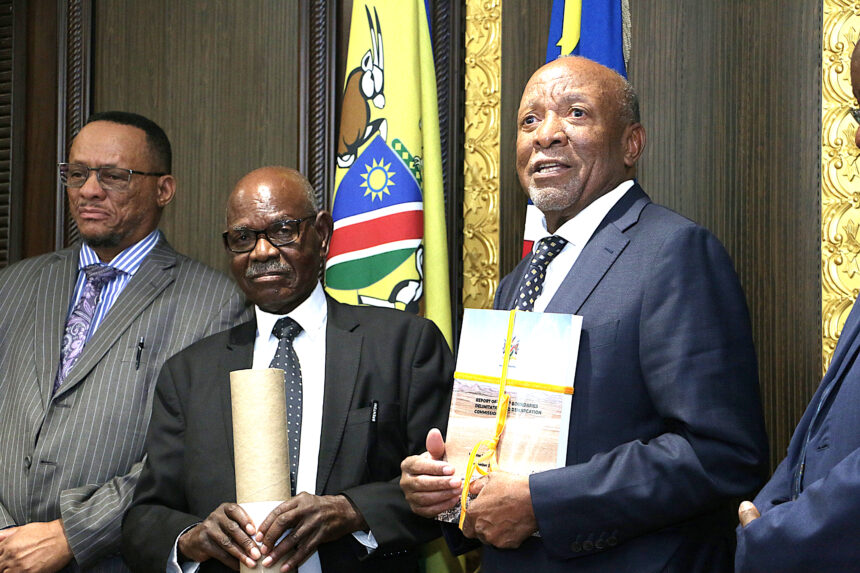Lahja Nashuuta
Namibia could create at least 10 more constituencies to bring the total number to 131 countrywide.
This forms part of the report submitted to President Nangolo Mbumba by the fifth Boundaries Delimitation and Demarcation Commission (BDDC) yesterday.
The commission, however, revealed that there will be no creation of new regions. It had received several requests for some regions to be split for better administration, amongst others. The commission is yet to make its full recommendations known.
Mbumba appointed the BDDC under acting justice Petrus Unengu in April last year.
The commission is responsible for delimiting and demarcating the internal boundaries of Namibia’s regions, constituencies and local authorities, and to recommend their names.
Unengu said the commission recommended the creation of 10 constituencies and the adjustment of seven regional borderlines, but deemed it unnecessary to create additional regions.
Amongst the regions proposed for division are Kunene, Khomas, Zambezi, //Kharas and Oshikoto. In the Zambezi region, governor Lawrence Sampofu was on record supporting the residents’ demands to shift the border between Zambezi and Kavango East back to the Mukuvi area.
Residents of Oshikoto also demanded that the region be split in two, arguing that it would accelerate balanced developmental planning and strengthen the country’s regional planning and governance at local level.
People of Ohangwena wanted Okongo to be made a region on its own, while Kunene residents wanted the region to be divided into Kunene North and Kunene South. They wanted the Kamanjab, Outjo and Khorixas constituencies to fall under Kunene South.
In their submission, the Kavango East Regional Council proposed that the region be divided into two regions, and for the creation of additional constituencies to address the region’s huge population as well as to improve access to services.
The proposals were to divide Mukwe, Ndiyona, Ndonga Linena, Mashare and Rundu Urban into two separate constituencies each.
In the Khomas region, the call was to divide the Samora Machel constituency, which has the highest population comprising 92 401 inhabitants, into two constituencies, with the proposal for the second one to be named John Otto Nankudhu, bringing the region’s constituencies to 11. In his remarks, Unengu said the commission advised the government to maintain the current 14 regions, considering the country’s population and the potential costs involved.
“Our work was guided by the political, geographical and economic situations of the country, and we were conscious of cost-effectiveness,” he stated. President Mbumba was elated. “I congratulate the commission for executing its duties in this regard. We will analyse the report, and forward it to Cabinet for consideration and implementation,” he said. He emphasised the importance of the commission in the context of national and regional elections, as well as in service delivery to citizens. Mbumba said the commission’s report will thus play a crucial role in advising the government on how Namibia should be administratively divided, considering changes such as population growth and migration.
Once endorsed, the report will likewise assist the Electoral Commission of Namibia in ensuring the registration of eligible voters in the correct regions and constituencies.
-lnashuuta@gmail.com


